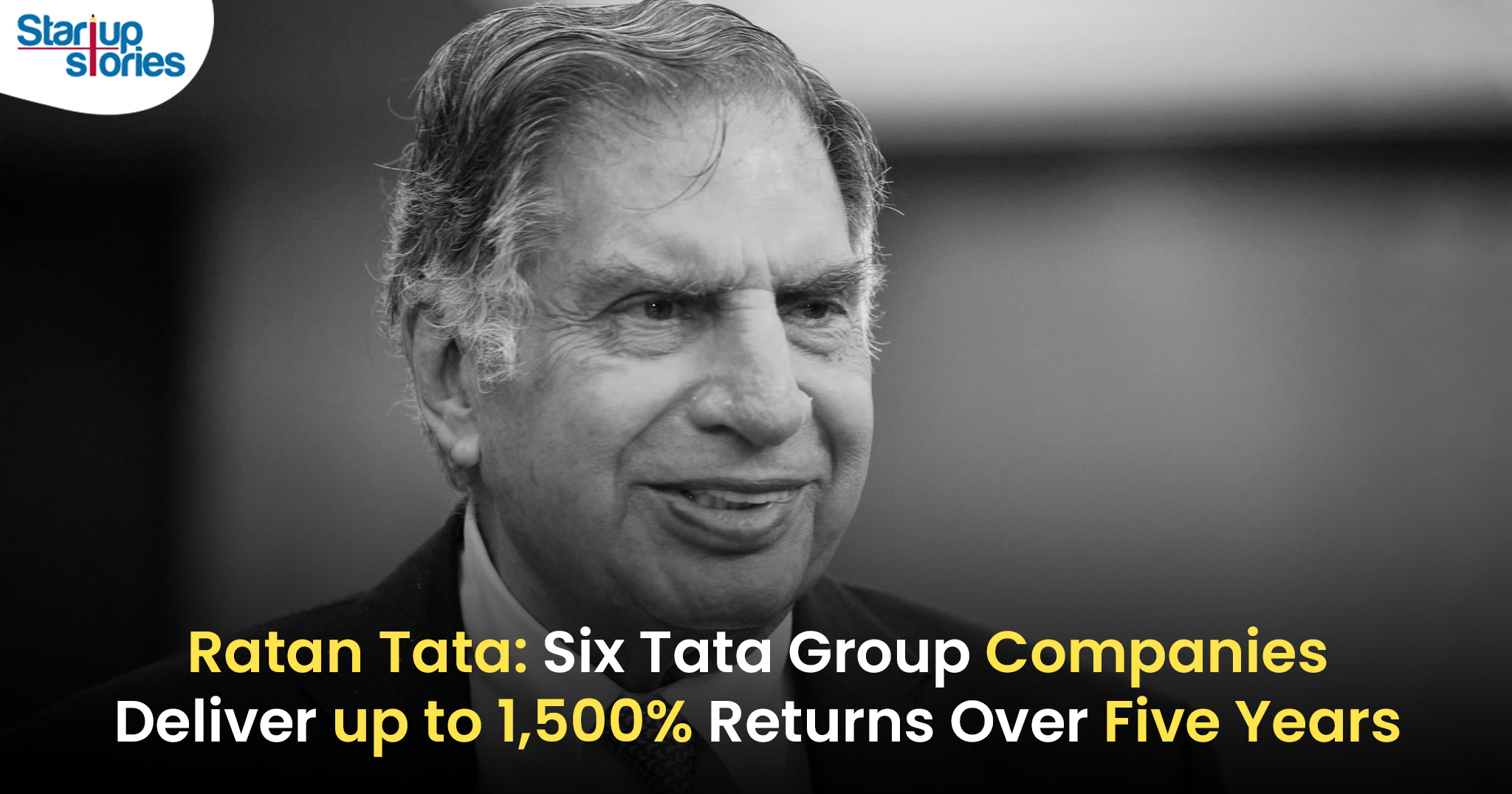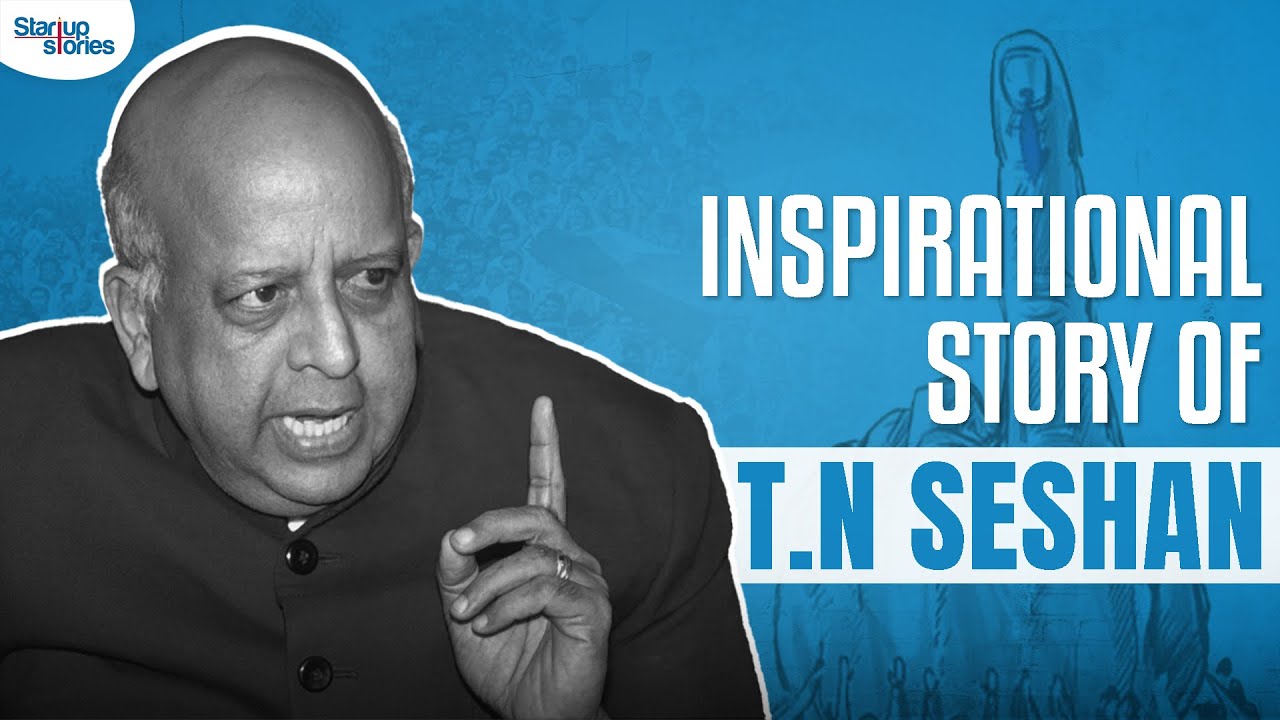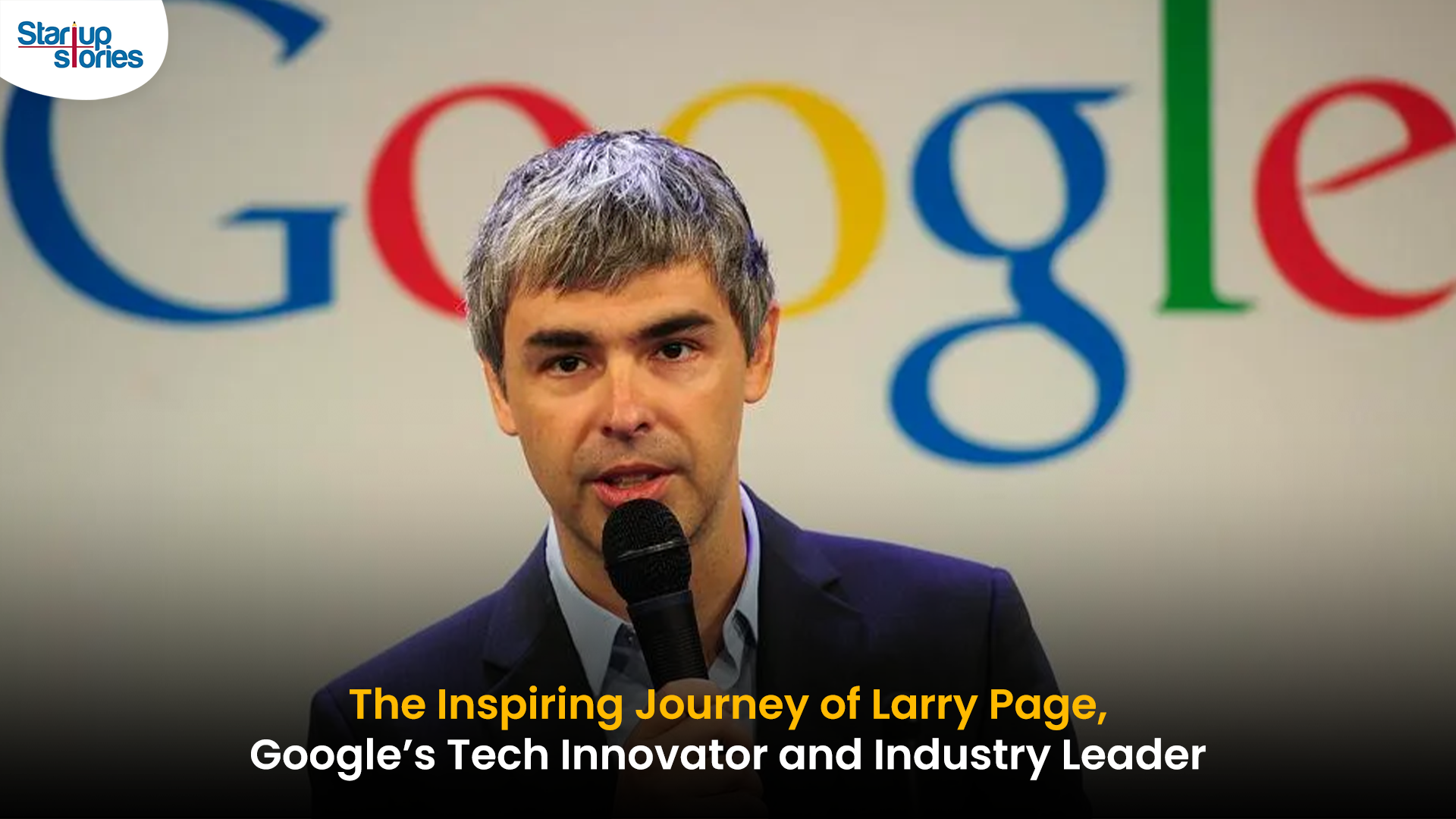Entrepreneur Stories
Ratan Tata: Six Tata Group Companies Record Astonishing Returns of Up to 1,500% in Five Years!

Ratan Tata’s Leadership and Legacy
Ratan Tata succeeded JRD Tata as Chairman of Tata Sons in March 1991 and served until December 2012, overseeing a transformative period that spanned over two decades. Under his stewardship, Tata Sons, the principal investment holding company and promoter of Tata companies, played a vital role in the growth and success of the conglomerate. Currently, these six Tata companies collectively represent about 10% of the Nifty50 index, with a combined market capitalization nearing ₹28 lakh crore.
In the wake of Ratan Tata’s passing on October 9, the business community reflects on his profound legacy in wealth creation. Under his leadership, the Tata Group established a remarkable reputation for generating significant returns, with six of its companies—Tata Consultancy Services (TCS), Tata Steel, Tata Motors, Titan Company, Tata Consumer Products, and Trent—achieving returns of up to 1,500% over the past five years. These companies are also key constituents of India’s Nifty50 index, which tracks the top 50 companies in the country.
Tata Consultancy Services (TCS)
As India’s largest IT company and the second-largest by market capitalization at ₹15.45 lakh crore, TCS has been a leading wealth creator. Since its listing in 2004, TCS has gained over 115% in the last five years, alongside a 12% increase in 2024 alone. The company is a major contributor to Indian exports and has consistently rewarded its shareholders with dividends. Analysts maintain a positive outlook, with Antique Stock Broking assigning a ‘hold’ rating and a target price of ₹4,450, while Sharekhan recommends a ‘buy’ with a target price of ₹5,230. TCS is expected to report moderate revenue growth, impacted by performance in retail and consumer packaged goods.
Tata Motors
The homegrown automotive giant has experienced remarkable growth, with a nearly 700% increase in stock value over the last five years. Ratan Tata began his career with Tata Motors and played a crucial role in launching landmark projects such as the Indica, India’s first fully indigenous car, and the Nano, known for its affordability. Currently, Tata Motors has a market capitalization exceeding ₹3.45 lakh crore, with analysts from Emkay Global Financial Services and Motilal Oswal projecting target prices of ₹1,175 and ₹990 respectively.
Tata Steel
Originally known as Tisco, Tata Steel has surged close to 350% in the past five years and boasts a market capitalization of around ₹2 lakh crore. Ratan Tata joined the company as a technical officer in 1965, and the stock has grown nearly tenfold over the last two decades. Analysts maintain a favorable outlook, with Elara Capital recommending an ‘accumulate’ rating and a target price of ₹171.
Titan Company
Titan has also been a standout performer with a remarkable 180% increase in stock value over the past five years and an impressive 700% growth over two decades. Titan’s current market capitalization is approximately ₹3 lakh crore. Analysts view Titan positively, with Antique Stock Broking targeting ₹4,485 and Morgan Stanley upgrading its rating with a target price of ₹3,570.
Tata Consumer Products
This company has delivered an impressive 310% return over the past five years and an extraordinary 5,000% return since 2004, with a market capitalization of ₹1.1 lakh crore. The brand’s strong performance reflects its strategic positioning within India’s fast-moving consumer goods sector.
Trent
Trent stands out as the top performer over the last five years, skyrocketing nearly 1,500%, with a remarkable 27,000% increase over the past two decades. Its current valuation stands at around ₹2.9 lakh crore. Recent coverage by Citi has given Trent a ‘buy’ rating with a target price of ₹9,250.
Conclusion
Overall, Ratan Tata’s leadership has left an indelible mark on the Tata Group, fostering innovation and robust growth that continues to benefit investors and the economy alike. The impressive returns generated by these six companies underscore Tata’s commitment to sustainable business practices and long-term value creation. As they navigate future challenges and opportunities, these firms remain pivotal players in India’s economic landscape.
Videos
T.N. Seshan: The Fearless Reformer Who Redefined Indian Democracy

T.N. Seshan’s name stands tall in India’s history as the man who transformed the nation’s electoral system with extraordinary courage and integrity. Born in 1932 in Kerala, Seshan grew up with values of discipline, education, and service to the nation — virtues that shaped his illustrious journey. From his early brilliance at Madras Christian College to his advanced studies in public administration at Harvard University, Seshan’s path reflected rare determination and intellect. Joining the Indian Administrative Service in 1955, he built a reputation as a no‑nonsense officer committed to efficiency and honesty, serving in key roles such as Secretary of Defense and overseeing vital national programs.
As the Chief Election Commissioner of India in 1990, T.N. Seshan sparked a new era of electoral integrity. In a system once marred by corruption, violence, and malpractice, Seshan brought order, fear, and respect through his groundbreaking reforms. He introduced voter ID cards, imposed strict spending limits on campaigns, and insisted on transparency at every level of the election process. Despite criticism from political circles that labeled him dictatorial, his relentless pursuit of fairness empowered every citizen to vote fearlessly. Under his leadership, the Election Commission became a symbol of strength and integrity in Indian democracy.
Seshan’s passing in November 2019 marked the end of an era, but his message continues to resonate across generations. Leaders from every corner of the country mourned the loss of the man who restored faith in free and fair elections. His enduring legacy reminds us that true leadership lies not in wielding power, but in serving people with honesty, courage, and conviction. T.N. Seshan’s life remains a timeless inspiration a reminder that democracy thrives only when its citizens are vigilant, responsible, and fearless.
Entrepreneur Stories
Indian Man Quits JPMorgan, Takes 70% Pay Cut to Launch $6 Million Startup

Leaving behind a high-paying job at JPMorgan, an Indian entrepreneur embraced a 70% salary cut to pursue true purpose and passion in the startup world. Disenchanted with what he described as a “robotic” corporate routine, he sought meaningful work that made a real impact. This pivotal decision marked the beginning of his new journey, one focused on value creation rather than titles and corporate perks.
Powered by resilience and fresh perspective, the entrepreneur launched his own startup, prioritizing innovation and hands-on solutions. The road was challenging, but his vision resonated with the market: the startup quickly gained traction and raised $6 million—an impressive acknowledgement of its potential in a competitive landscape. Every hard lesson from early setbacks and bootstrapping paid off in real customer growth and investor confidence.
Today, his journey stands as an inspiring example for professionals seeking authentic success outside the corporate grind. By trading comfort for creative freedom, he grew a venture that solves important problems, generates jobs, and builds wealth beyond just salary. For ambitious founders, his story highlights the power of risk-taking, adaptability, and relentless focus on impact in India’s thriving startup ecosystem.
Videos
Larry Page: The Visionary Co-Founder Behind Google’s Global Success

Larry Page is a visionary technology entrepreneur and co-founder of Google, one of the world’s most influential companies. Born in 1973 in Michigan, Page grew up surrounded by computer technology, which inspired his passion for innovation from an early age. He studied computer engineering at the University of Michigan and later pursued his PhD at Stanford University, where he developed the revolutionary PageRank algorithm with Sergey Brin. This technology fundamentally changed the way search engines rank websites, making Google the most accurate and popular search engine globally.
The journey of Larry Page and Google began in 1998 when they officially launched the search engine from a small garage. Leveraging their unique algorithm, Google quickly surpassed competitors due to its ability to deliver highly relevant search results, transforming internet search forever. Under Larry Page’s leadership as CEO, Google expanded beyond search to launch groundbreaking products including YouTube, Gmail, and Google Maps, turning it into a global tech powerhouse that shapes how we access and interact with information online.
Larry Page later became the CEO of Google’s parent company, Alphabet Inc., driving innovation and investment in next-generation technologies such as artificial intelligence, autonomous vehicles, and healthcare solutions. His visionary leadership and commitment to technological advancement have cemented his legacy as one of the most influential figures in the tech industry. Today, Larry Page remains a key influencer in shaping the future of technology and digital innovation worldwide.













binance Anmeldungsbonus
April 18, 2025 at 12:52 pm
Your article helped me a lot, is there any more related content? Thanks!
Hpbvypqa
May 27, 2025 at 5:18 pm
Explore os melhores cassinos online classificados de 2025. Compare bônus, seleções de jogos e a confiabilidade das principais plataformas para uma jogabilidade segura e recompensadoracassino
85rgc
June 6, 2025 at 10:54 pm
can you buy generic clomiphene without insurance order generic clomiphene without rx where can i buy clomiphene tablets buy clomid without dr prescription cost clomid without a prescription what is clomiphene medication cheap clomiphene online
skapa binance-konto
July 29, 2025 at 10:08 am
Can you be more specific about the content of your article? After reading it, I still have some doubts. Hope you can help me.
binance
October 8, 2025 at 1:28 am
I don’t think the title of your article matches the content lol. Just kidding, mainly because I had some doubts after reading the article.
Registrieren
October 20, 2025 at 2:34 am
Thanks for sharing. I read many of your blog posts, cool, your blog is very good.
GO88
November 5, 2025 at 10:11 am
Tham gia cộng đồng game thủ tại Go88 để trải nghiệm các trò chơi bài, poker phổ biến nhất hiện nay.
谷歌站群
November 6, 2025 at 7:01 pm
专业构建与管理谷歌站群网络,助力品牌实现全域流量的强势增长。谷歌站群
MM88
November 7, 2025 at 4:56 am
Với giao diện mượt mà và ưu đãi hấp dẫn, MM88 là lựa chọn lý tưởng cho các tín đồ giải trí trực tuyến.
站群程序
November 10, 2025 at 8:05 am
采用高效谷歌站群策略,快速提升网站在搜索引擎中的可见性与权重。谷歌站群
MM88
November 10, 2025 at 5:27 pm
Khám phá thế giới giải trí trực tuyến đỉnh cao tại MM88, nơi mang đến những trải nghiệm cá cược thể thao và casino sống động.
Kuwin
November 16, 2025 at 3:07 am
kuwin sở hữu kho game đa dạng từ slot đến trò chơi bài đổi thưởng, mang đến cho bạn những giây phút giải trí tuyệt vời.
J88
November 21, 2025 at 11:27 pm
Đến với J88, bạn sẽ được trải nghiệm dịch vụ cá cược chuyên nghiệp cùng hàng ngàn sự kiện khuyến mãi độc quyền.
iwin
November 28, 2025 at 8:49 pm
iwin – nền tảng game bài đổi thưởng uy tín, nơi bạn có thể thử vận may và tận hưởng nhiều tựa game hấp